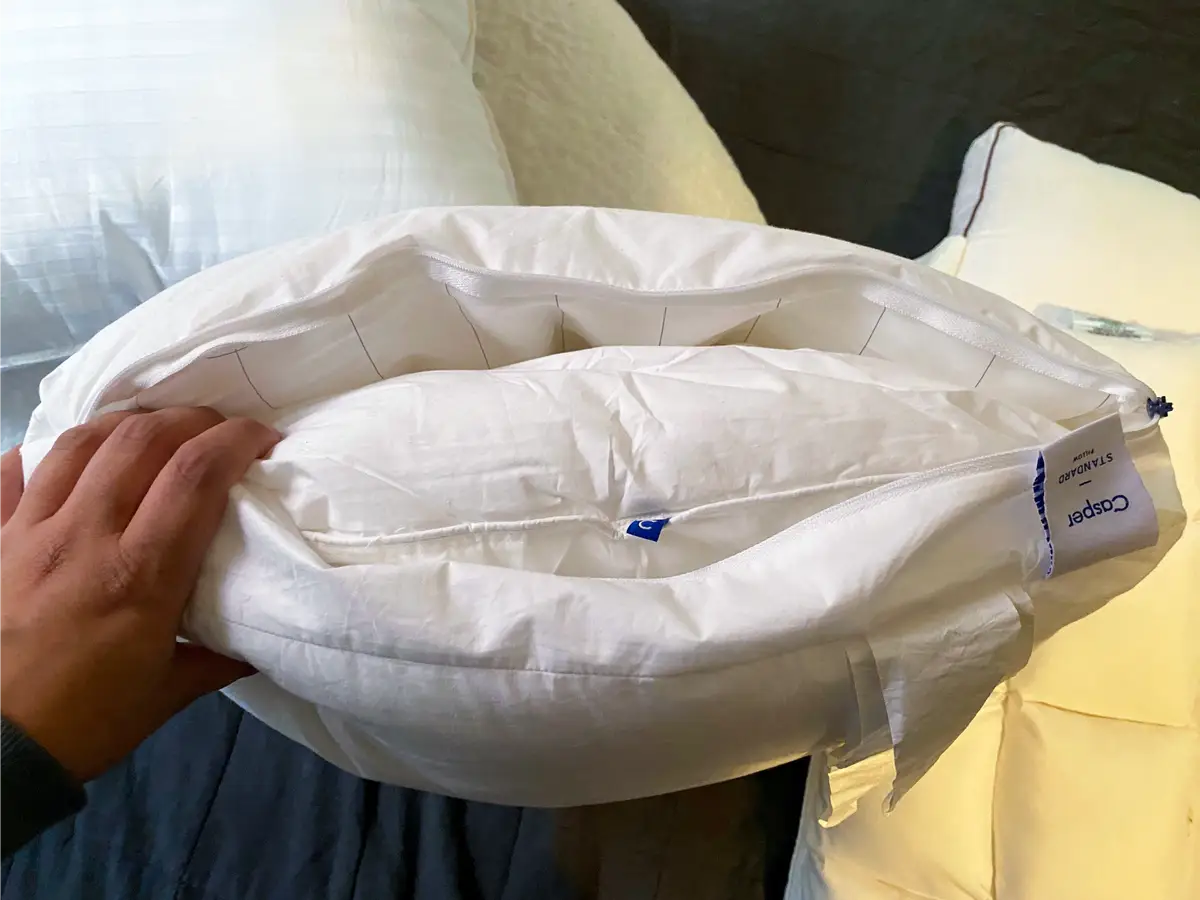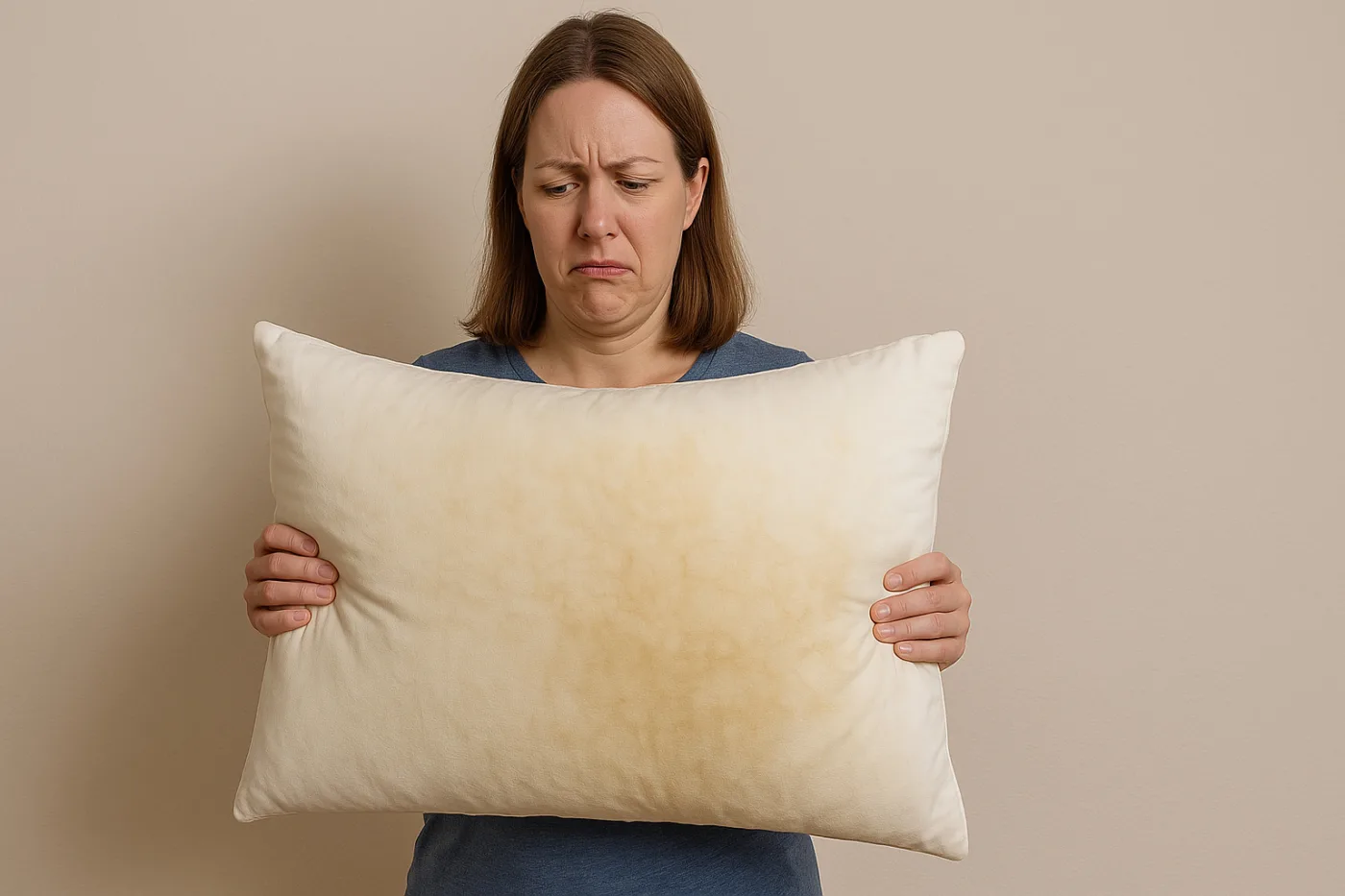Blog
How Long Should Pillows Last Before You Replace Them?
How Long Should Pillows Last Before You Replace Them?
Most pillows should be replaced every 1–2 years. The exact lifespan depends on material, quality/density, hygiene, and how you care for it. Some options—like latex or buckwheat—can last longer, while low-density synthetics wear out faster. Replace sooner if you notice flat spots, lumps, odors, stains, allergy flare-ups, or morning neck/shoulder pain.
What “Lifespan” Really Means (Support + Hygiene)
A pillow “lasts” only as long as it can (1) hold your head/neck in neutral alignment and (2) stay sanitary. Even if a pillow looks fine, compressed fill or trapped moisture/allergens can hurt sleep quality. Your replacement trigger should be either loss of support or hygiene concerns—whichever comes first.

Pillow Lifespan by Material (Typical Ranges)
| Pillow Type | Typical Lifespan | Notes on Durability & Care |
|---|---|---|
| Polyester / Microfiber | 0.5–2 yrs | Flattens fastest; wash gently, low heat dry. Use protector to delay clumping. |
| Down-alternative | 1–2 yrs | Better than basic poly; still loses loft with heavy use. |
| Cotton / Bamboo Viscose | 2–4 yrs | Breathable; can compact over time. Wash per label; dry fully. |
| Wool | 2–4 yrs | Resilient loft; air frequently; avoid high heat. |
| Memory Foam (solid or shredded) | 2–3 yrs | Support depends on density; never machine-wash solid foam. Rotate and air out. |
| Latex | 3–5 yrs | Highly resilient; avoid heat and soaking; spot clean. |
| Down / Feather | 2–5 yrs | Can recover with fluffing; full dry cycles to prevent clumps. |
| Buckwheat (hulls) | 5–10 yrs | Replace/refresh hulls periodically; keep dry at all times. |
Ranges are averages for nightly use with a pillowcase + protector. Higher density/quality usually lasts longer.

The 60-Second Pillow Audit (At-Home Check)
Use this quick checklist every 3–6 months:
Fold Test: Fold the pillow in half. If it doesn’t spring back, support is fading.
Shake/Fluff Test: Shake for 10 seconds. Persistent lumps or dead zones = broken fill.
Sniff Test: Lingering musty/acidic odors after washing = trapped moisture/bacteria.
Spot Check: Yellowing, stubborn stains, or dampness suggest hygiene issues.
Morning Body Check: Waking with neck/shoulder/back pain or tingling hands = likely poor alignment.
Allergy Check: Nighttime sneezing/itchy eyes/runny nose can signal dust mites or allergens.
If you fail any two checks, plan to replace.
Signs You Should Replace Sooner
Visible mold/mildew or dampness that returns after drying
Bedbug or dust-mite infestation history
Permanent odor even after deep cleaning and sunning
Pillow feels flat, hard, or lumpy and won’t revive with fluffing
New or worsening morning pain despite proper mattress

How to Extend Your Pillow’s Life (Without Sacrificing Hygiene)
1) Daily & Weekly Habits
Use both a pillowcase and a zippered protector (wash case weekly, protector monthly).
Air out pillows in sunlight or near a breezy window for 1–2 hours monthly.
Go to bed with dry hair; remove makeup/skincare residue.
2) Cleaning & Care by Type
| Type | Wash Guidance | Drying Guidance | Frequency |
|---|---|---|---|
| Poly / Microfiber / Down-alt | Machine wash gentle, small amount of mild detergent. | Low heat with dryer balls; ensure fully dry. | Every 3–6 months |
| Down / Feather | Gentle wash (or professional clean per label). | Thorough dry on low heat + dryer balls to prevent clumps. | Every 3–6 months |
| Memory Foam (solid) | No machine wash. Spot clean only; deodorize with baking soda, vacuum. | Air dry flat; no heat. | Spot as needed; air monthly |
| Shredded Foam | Check label; many require spot clean only. | Air dry; fluff by hand. | Spot as needed |
| Latex | Spot clean; avoid soaking/heat. | Air dry flat, shaded. | Spot as needed |
| Buckwheat | Do not wet hulls. Wash cover only; sun-dry hulls if damp. | Keep hulls bone-dry. | Replace/refresh hulls as needed |
Pro move: Rotate/flip your pillow every 2–4 weeks to distribute wear.
Sleep Position & Loft: When “Lasting” Stops Being “Supportive”
A pillow may “survive” but stop supporting once loft changes:
Side sleepers: Need higher loft to fill shoulder gap. Replace when the pillow can’t keep the neck level.
Back sleepers: Medium loft; watch for back-of-head sink that tips chin down.
Stomach sleepers: Low loft; replace when even a thin pillow arches the neck.
If you’re adjusting posture with your hand/arm under the pillow, support has likely failed.

Storage & Environment Tips
Store spares in a cool, dry linen closet; avoid basements/attics/garages.
Use breathable bags (cotton) vs. plastic to prevent moisture buildup.
Keep pets off pillows to reduce dander and oils.
Replacement Cheat Sheet (Bookmark This)
Poly / Microfiber / Down-alt: replace 12–24 months
Cotton / Bamboo Viscose / Wool: replace 24–48 months
Memory Foam (solid/shredded): replace 24–36 months
Latex: replace 36–60 months
Down / Feather: replace 24–60 months (depends on quality/care)
Buckwheat: replace/refresh hulls as needed; 5–10 yrs with upkeep

FAQs
How often should I wash my pillow (not just the case)?
For washable fills (poly, down-alt, some down), clean every 3–6 months. Foam/latex can’t go in a washer—spot clean and air monthly. Always dry completely to avoid mildew.
Does yellowing always mean I must replace the pillow?
Not always. Yellowing often comes from 汗/skin oils. If the pillow still supports well and odors wash out, you can keep using it. Stubborn odor, dampness, or recurring stains after cleaning are reasons to replace.
Can I revive a flat pillow instead of replacing it?
Sometimes. Try a full low-heat dry with dryer balls, pause to manually fluff, and repeat. For down/feather, this can restore loft. If it collapses again overnight, it’s time for a new one.
Why do I wake up with neck pain even though my pillow looks fine?
Visuals can mislead. If loft has subtly dropped or shifted, your cervical alignment may be off. Match loft to your sleep position and shoulder width; replace when neutral alignment is no longer maintained.
Are pricier pillows guaranteed to last longer?
Not guaranteed, but higher density foams, quality down, and natural latex usually retain structure longer. Pairing a good pillow with a protector and correct cleaning habits matters just as much.
Most pillows won’t make it past 1–2 years of nightly use without losing support or hygiene. Use the 60-second audit, follow care by material, and don’t hesitate to replace when your body (or nose) says it’s time. Your neck—and your sleep—will thank you.
